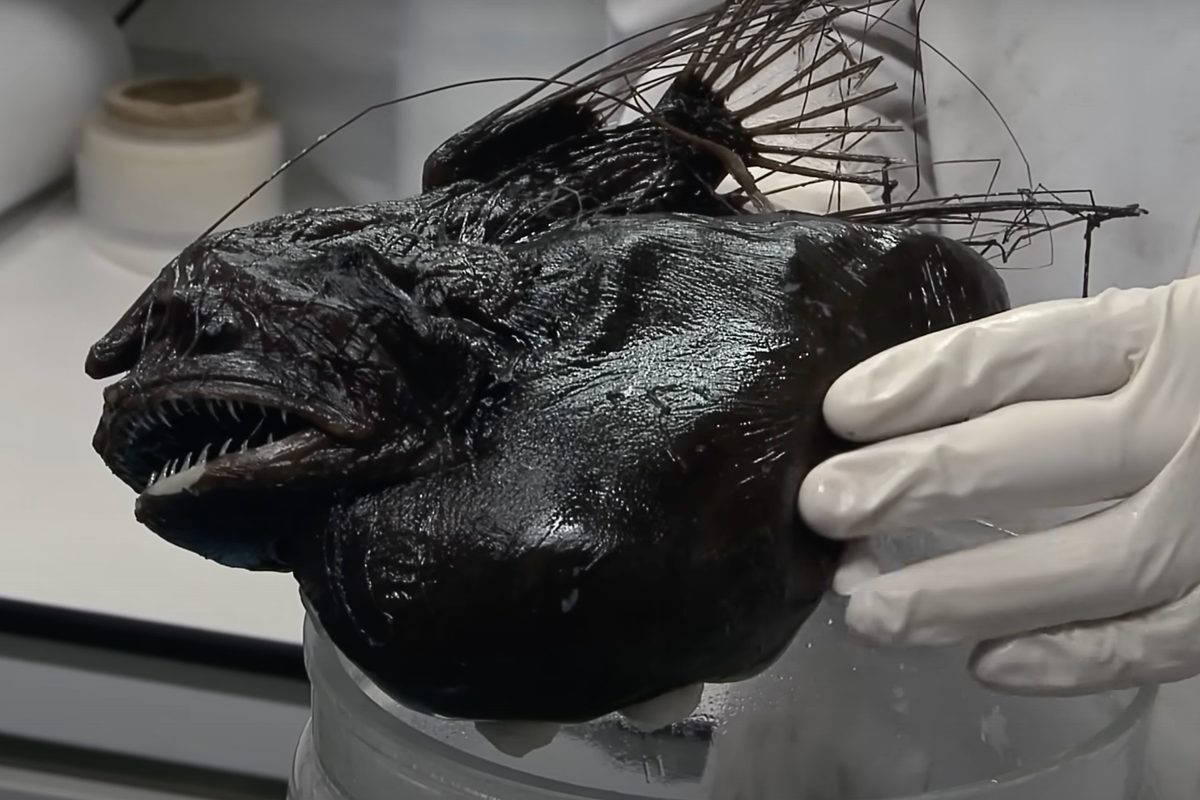Scientists at London’s Natural History Museum come across some of the world’s weirdest, rarest and most wonderful specimens – and some of them arrive with mysteries to solve.
One puzzle was a hairy anglerfish – a rare species that lives over 1,000 metres deep – that had an enormous, bulging stomach. What was inside? And how would they find out?
One option was to dissect the animal but, as desperate as they were to know what was inside, that didn’t want to do this. “We don’t want to cut it open because it’s such a rare specimen,” says James Maclaine, the museum’s Curator of Fish, in a YouTube video (below) documenting the mystery of the anglerfish’s last meal. “We don’t want to damage it.”
Thankfully, they had another way to peer inside: using a CT scanner. “The CT scan is like a 3-dimensional X-ray so we can look at the stomach contents from every angle and we can examine it in a lot more detail,” Maclaine explains. By taking over 3,000 X-rays, it allowed them to piece together what the prey looked like inside the anglerfish’s belly, without making any incisions or doing any damage to the rare sample.
It was such a clear image that Maclaine and his team could identify the exact species that met its untimely end in the stomach of the anglerfish. Using the picture it revealed of the victim’s otoliths (ear bones), which they sent to a world-leading expert, they figured out it was a fish called a soft skin smooth head (Rouleina attrita).
The anglerfish “probably ate it headfirst,” Maclaine says in the video. “This thing probably came in to look at the light the anglerfish has, and then the anglerfish grabbed it and then swallowed it and its stomach has expanded to fit it all in.”
More than 10 years since the footage was shared on YouTube, visitors to the museum’s spirit collection (where the specimen is stored) still ask why this rare deep-sea fish has such a swollen stomach.
But, thanks to their investigation, they can reveal the prey’s identity down to the specific species, says Maclaine: “Now, when people ask what’s inside its stomach, I can give them a definite answer.”
Image and video credit: London Natural History Museum
More amazing stories from around the world
